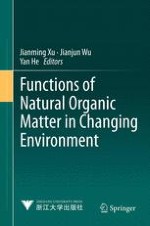2013 | OriginalPaper | Buchkapitel
Quantitative Determination of 2-Mercaptoethane Sulfonate as a Biomarker for Methanogens in Soil Using HPLC
verfasst von : Prabhat Pramanik, Pil Joo Kim
Erschienen in: Functions of Natural Organic Matter in Changing Environment
Verlag: Springer Netherlands
Aktivieren Sie unsere intelligente Suche, um passende Fachinhalte oder Patente zu finden.
Wählen Sie Textabschnitte aus um mit Künstlicher Intelligenz passenden Patente zu finden. powered by
Markieren Sie Textabschnitte, um KI-gestützt weitere passende Inhalte zu finden. powered by
